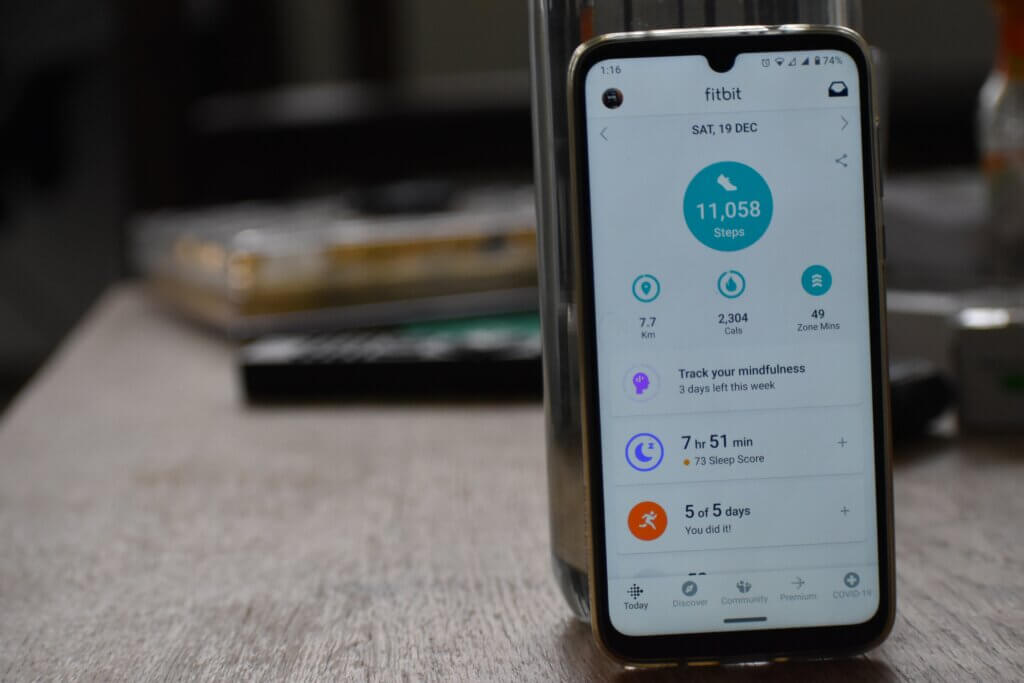After reading this article, you’ll:
- Grasp the Essence of Gap Analysis: Readers will understand the concept of gap analysis in healthcare, its significance, and how it can help in optimizing the functionalities and usability of healthcare apps to better meet the needs of users.
- Recognize the Benefits and Challenges: Gain an understanding of the numerous advantages of conducting a gap analysis, such as fostering innovation and anticipating risks, while also being aware of the challenges involved, particularly around data privacy and the fast-paced changes in the healthcare landscape.
- Learn a Structured Approach: Discover a systematic 5-step process for performing a gap analysis, from defining the scope to continuously monitoring and adapting the plan, ensuring that healthcare apps remain current, relevant, and user-centric.

In today’s digital era, healthcare apps have revolutionized the way patients receive medical care and how healthcare providers operate. With the surging demand for these applications, it’s imperative that they meet user needs comprehensively. However, as the healthcare environment continually evolves, there can be mismatches between what these apps offer and what patients or providers truly require.
Here at Dogtown Media, as a leading healthcare app developer, we have the expertise and insights to assist organizations in identifying these gaps. Our vast experience in the field allows us to understand user needs deeply, evaluate current app functionalities, and craft strategies to bridge any discrepancies. Identifying these gaps is not only crucial for enhancing patient care but also ensures that healthcare providers offer seamless and effective services. Dive into this article to gain a profound understanding of the essence of gap analysis in healthcare, its significance, and the steps involved in the process.
What is Gap App Analysis in Healthcare?
 Gap analysis in healthcare refers to the process of comparing current performance, functionalities, or offerings with the desired or potential ones. In the context of healthcare apps, it entails examining the existing features, usability, and outcomes against the needs and expectations of end-users – be it patients, doctors, or administrative staff.
Gap analysis in healthcare refers to the process of comparing current performance, functionalities, or offerings with the desired or potential ones. In the context of healthcare apps, it entails examining the existing features, usability, and outcomes against the needs and expectations of end-users – be it patients, doctors, or administrative staff.
The main objective of such an analysis is to pinpoint areas of improvement or innovation that can bridge the divide between the current state and the desired future state. This process aids in uncovering missed opportunities, areas of inefficiencies, or even potential risks, ensuring that healthcare apps are tailored to serve their audience in the best possible manner.
What Are The Benefits Of A Gap App Analysis?
Gap analysis offers a multitude of advantages, especially in the realm of healthcare. Firstly, it provides a clear snapshot of where a healthcare app currently stands in terms of functionality, usability, and user satisfaction. By identifying these discrepancies, stakeholders can prioritize areas of improvement and allocate resources more efficiently. Additionally, this process helps in anticipating potential risks or issues before they escalate, safeguarding both providers and patients.
Conducting regular gap analyses fosters a culture of continuous improvement and innovation. It also ensures that the app remains relevant and beneficial amidst the dynamic nature of the healthcare industry. Moreover, by aligning app functionalities with actual user needs, healthcare organizations can enhance patient engagement, boost provider productivity, and ultimately achieve better health outcomes.
Challenges in Conducting a Gap Analysis in Healthcare
 Conducting a gap analysis in healthcare is not without its challenges. Data privacy remains paramount; obtaining, handling, and analyzing health-related data requires stringent adherence to regulations, ensuring that patient confidentiality is never compromised. Another challenge is the rapidly evolving healthcare landscape, with frequent changes in regulations, standards, and patient needs.
Conducting a gap analysis in healthcare is not without its challenges. Data privacy remains paramount; obtaining, handling, and analyzing health-related data requires stringent adherence to regulations, ensuring that patient confidentiality is never compromised. Another challenge is the rapidly evolving healthcare landscape, with frequent changes in regulations, standards, and patient needs.
This dynamism makes it challenging to pinpoint a moving target, as the desired ‘future state’ can shift before changes are even implemented. Technological constraints also pose problems. Legacy systems, integration issues, or the rapid pace of tech advancements can impede a thorough and timely analysis. Together, these challenges necessitate a strategic and agile approach to gap analysis in healthcare.
How to Perform a Gap Analysis for Healthcare Apps in 5 Steps
Step 1: Define The Scope of Your Analysis
Every journey requires a starting point and a defined path. In gap analysis, the process commences by meticulously determining the boundaries of your evaluation. Is your study confined to a particular module of the app, a specific medical department, or the entire institution?
Setting this scope is more than just a preliminary step; it establishes the framework, drives the direction of the analysis, and ensures the relevancy of collected data. Furthermore, by marking clear boundaries, stakeholders gain clarity on their roles, ensuring efficiency and coherence as the process unfolds.
Step 2: Identify The Current Gap
To recognize disparities, a clear understanding of the present scenario is paramount. Start by collating detailed data on existing app functions, operational efficiencies, and perhaps more importantly, user feedback.
With this assembled information, dig deeper into the underlying reasons for the observed gaps. Was it a technological lag, evolving user requirements, or perhaps a strategy that didn’t pan out? Identifying the root cause isn’t solely about addressing existing gaps—it’s a proactive approach to preempt and prevent similar shortcomings in the future.
Step 3: Define The Desired Future State
Once the present is fully understood, shift your focus to the future. This isn’t about mere enhancements but creating an aspirational vision for where you’d like your healthcare app to be. How do you want your app to evolve to cater to emerging patient needs? How can technology advancements be seamlessly integrated? By answering these critical questions, you set forth a comprehensive and forward-looking blueprint that’s both reflective of user aspirations and aligned with strategic organizational goals.
Step 4: Develop and Implement a Plan of Action
Identification of gaps is half the battle; the other half is effectively bridging them. This phase involves chalking out a thorough strategy. Enumerate clear steps, assign responsibilities, and ensure there’s a timeline attached to each action point.
Amidst this planning, the importance of setting Key Performance Indicators (KPIs) can’t be overstated. KPIs serve a dual purpose—they offer tangible metrics to gauge progress, and they provide accountability. In the dynamic world of healthcare, where change is the only constant, having quantifiable metrics ensures that the course remains true and any deviations are promptly addressed.
Step 5: Monitor and Adapt Your Plan
A gap analysis isn’t a one-off process; it’s an ongoing commitment to excellence. As you roll out changes, engage in relentless monitoring. Continuously track your KPIs and assess whether the plan’s execution aligns with the desired outcomes. But remember, flexibility is key. As the healthcare landscape evolves, be prepared to pivot your strategies.
Regularly solicit feedback, stay updated with technological innovations, and be ready to make necessary adjustments. This adaptive approach not only ensures that the healthcare app remains at the pinnacle of its potential but also that it consistently delivers unparalleled value to its users.
Emerging Trends in Healthcare App Offerings
The healthcare domain is currently witnessing a confluence of technological advancements and evolving patient expectations. One notable trend is the rise of telemedicine, allowing patients to consult doctors remotely, a change catalyzed further by the global pandemic. Artificial Intelligence and Machine Learning are also taking center stage, offering predictive diagnostics and personalized patient care plans.
Furthermore, wearable technologies are promoting preventive care, empowering patients to monitor their health metrics in real-time. As patient needs shift towards a desire for more autonomy, integration, and real-time care, apps will need to adapt accordingly. In this dynamic setting, continuous gap analyses become vital. They ensure that healthcare apps remain aligned with these shifting trends, maintaining their relevance and efficacy, and delivering optimal patient outcomes.
The ever-evolving landscape of healthcare technology underscores the significance of staying ahead of the curve. As emerging trends reshape patient needs and technological capabilities, healthcare apps must rise to the challenge, ensuring they remain pertinent and beneficial.
Regular gap analyses act as a compass, guiding these apps towards continuous improvement and ensuring that they consistently align with their users’ expectations and the industry’s advancements. In essence, the future of healthcare apps lies in their adaptability and their commitment to meeting the needs of an increasingly informed and empowered patient base.





